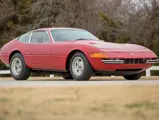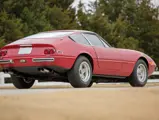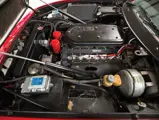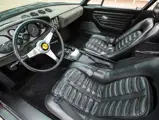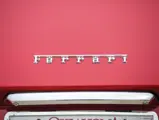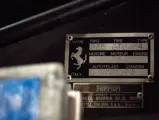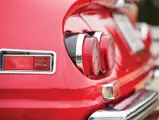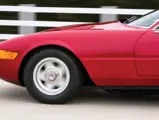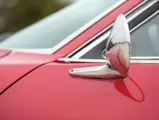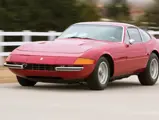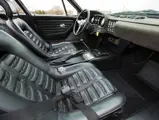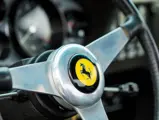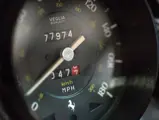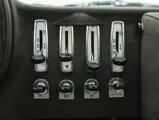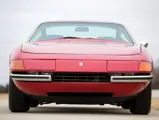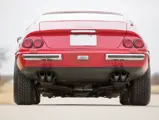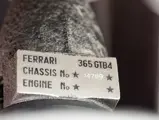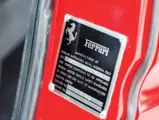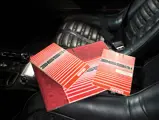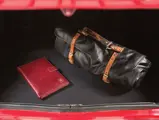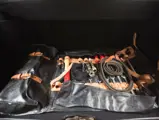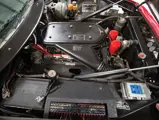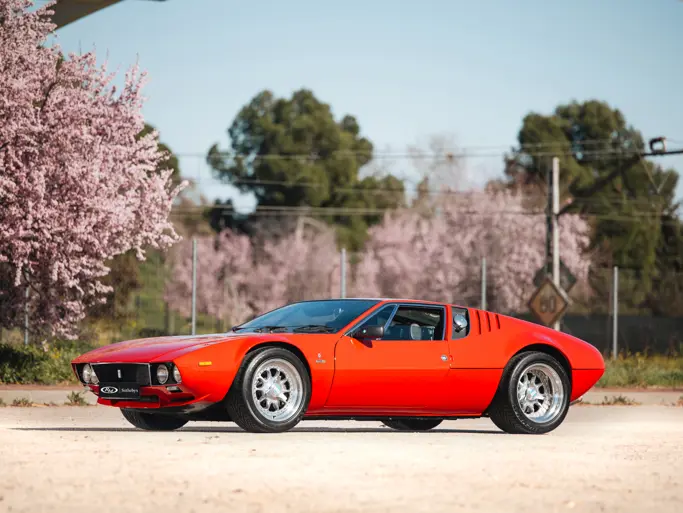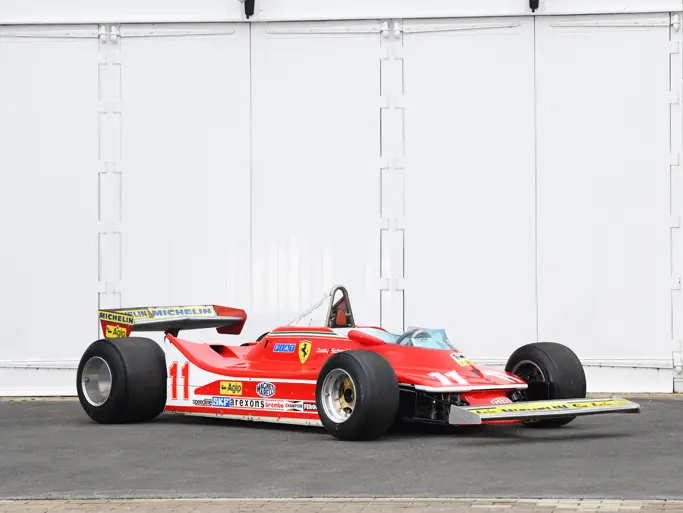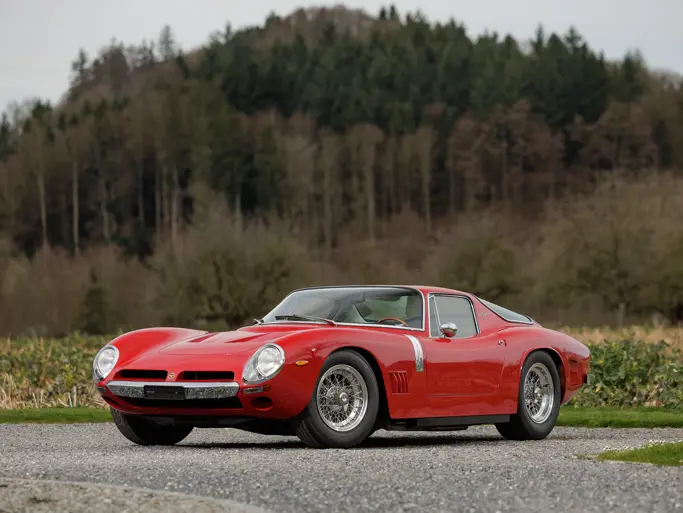Arizona 2015
1971 Ferrari 365 GTB/4 Daytona Berlinetta by Scaglietti
{{lr.item.text}}
$715,000 USD | Sold
 | Phoenix, Arizona
| Phoenix, Arizona
{{internetCurrentBid}}
{{internetTimeLeft}}

- Largely unrestored and very well preserved
- Accompanied by original books and tools
- Ferrari’s iconic grand touring berlinetta; a mechanical and cosmetic masterpiece
352 bhp, 4,390 cc dual overhead-camshaft V-12 engine with six Weber 40 DCN20 carburetors, five-speed manual rear-mounted transaxle, four-wheel upper- and lower-wishbone coil-spring independent suspension, and four-wheel hydraulic disc brakes. Wheelbase: 94.5 in.
Ferrari’s 365 GTB/4 was unveiled to the public at the 1968 Paris Salon as the replacement for the highly successful 275 GTB/4, and it sought to raise the bar once more for high-end gran turismo berlinettas. With lines penned by Leonardi Fioravanti at Pininfarina, its bodywork was an instant styling icon, as it was simultaneously sensuous and aggressive and combined both the sharp angles that would define the 1970s and the flowing curves that characterized cars of the 1960s, making it perfect for any occasion. Even though the public was expecting a mid-engined supercar from the world’s most celebrated sports car manufacturer, as Lamborghini and several other companies had moved to mid-engined layouts for their flagship models, Ferrari retained the tried-and-true formula of placing their V-12 in the front, asserting that this formula could still produce cutting-edge performance. The car quickly earned the nickname “Daytona” from Ferrari’s incredible sweep of the podium at the 1967 24 Hours of Daytona, and interest from motoring enthusiasts, as well as Ferrari’s well-heeled clientele, was high from the moment it was released.
That front-mounted V-12 was Ferrari’s all-new 4.4-liter unit that was topped with six Weber carburetors, and it had more than enough performance to back up its stunning looks. The engine produced 352 brake horsepower and 315 foot-pounds of torque at 7,500 rpm, resulting in fantastic performance. The Daytona could launch itself from a standstill to 60 mph in 5.4 seconds and continue on to a top speed of 174 mph, which was just 3 mph faster than the Miura P400, making it the fastest production sports car ever built at its introduction.
The Daytona was a staple in the Ferrari market range until production ceased in 1973. In total, 1,284 examples were produced, making it one of the most successful models the company had ever produced. Unfortunately, this would be the last traditional Ferrari grand tourer for quite some time, as it was replaced with the mid-engined 365 GT4 BB. While that type of automobile might have been gone from the Ferrari lineup, the Daytona was never forgotten, and it has always had a place in the hearts of Ferrari enthusiasts for its wonderful looks and driving dynamics.
When new, the Daytona was praised by both customers and the motoring press alike, with perhaps one of the most well-known quotes about the Daytona’s performance coming from noted racing driver and later automotive journalist Paul Frere. After reportedly taking the Daytona to 176 mph on the Italian autostrada in 1969, he commented that the radio was useless past 120 mph. He further noted that “if you go faster, it’s the engine that makes the music; the finest music of all to the ears of the enthusiast, and the music he can enjoy in a well-sprung car fitted with such amenities as electric window lifters, air conditioning…and a really capacious luggage locker—a grand touring car par excellence.” This was great praise from a man who was certainly very familiar with Ferraris, as he took 1st overall, with Olivier Gendenbien, for Scuderia in the 1960 24 Hours of Le Mans, where he drove a 250 TR 59/60. The Daytona also earned additional fame for its stunning performance in the first Cannonball Run. Dan Gurney and Brock Yates co-drove a Ferrari Daytona from New York City to Redondo Beach, California, in November 1971, and it only took a shocking 35 hours and 54 minutes to complete, proving the reliability and competency of the Daytona at high speeds.
The particular Daytona presented here, chassis number 14769, was completed by the factory on December 2, 1971, and according to Ferrari historian Marcel Massini, it was finished in Bianco Polo (20-W-152) over a Nero (VM 8500) leather interior and was finished in U.S. specifications, with left-hand drive and fitted with air conditioning. Later that month, it was shipped across the pond and subsequently delivered new to Bill Harrah’s Ferrari distributorship, Modern Classic Motors in Reno, Nevada.
On April 19, 1972, the car was sold new to its first private owner, Gary MacLeod of Medina, Washington. Following its departure from MacLeod’s ownership, it resided with a noted Ferrari collector who was based in North Carolina, and then, in 1996, it went to William S. Ferguson, of Albuquerque, New Mexico, who had the car painted its current shade of red. The car passed from Ferguson to Earl Whittemore, of Los Lunas, New Mexico, in November 1999, before finding its way to its current custodian a few years later.
Throughout its life, chassis number 14769 has remained in largely original condition, save for its exterior color. The car has clearly been very well maintained throughout its whole life, and it is reported to be in excellent mechanical condition, with only a handful of minor cosmetic flaws. The Daytona’s black leather interior remains in remarkable condition and shows only minor signs of use. The car currently wears Cromodora wheels with Michelin XWX tires, and its rear wheels are the wider and much more desirable nine-inch type. The car also retains its original tools and tool roll, as well as a set of original and correct owner’s manuals in their correct leather pouches, which are assets that help round out this wonderful Daytona. With its current owner, chassis number 14769 underwent a full service to ensure that it is in fully functioning condition following a period of storage. As such, the carburetors were rebuilt, the brakes were serviced, all fluids and filters were replaced, and the car underwent a compression test, which it passed with flying colors. The car is further documented by service records from MacLeod’s and Ferguson’s ownerships.
The Daytona is a very significant car in terms of Ferrari history, as it was the last of its kind until the 550 Maranello was introduced. As the fastest production automobile in the world at the time of its introduction and nicknamed for the company’s incredible 1-2-3 finish at the 1967 24 Hours of Daytona, it embodies all the best parts of the Ferrari mystique to many tifosi. It combines gorgeous Pininfarina bodywork that was crafted by Scaglietti, a potent 4.4-liter V-12, and enough space for two plus luggage, making it the ideal automobile for high-speed cruising through Europe or North America.
This Daytona is offered today in largely original condition, and it is a compelling example of the breed. It is reported to run and drive very well, and it would make for an excellent driver. At the same time, it retains all of its major original components and would also be an ideal base for a concours-level restoration. In short, this Daytona allows its new owner the freedom of choice for how Ferrari ownership should be best experienced: on the open road, on the concours field, or perhaps both.

